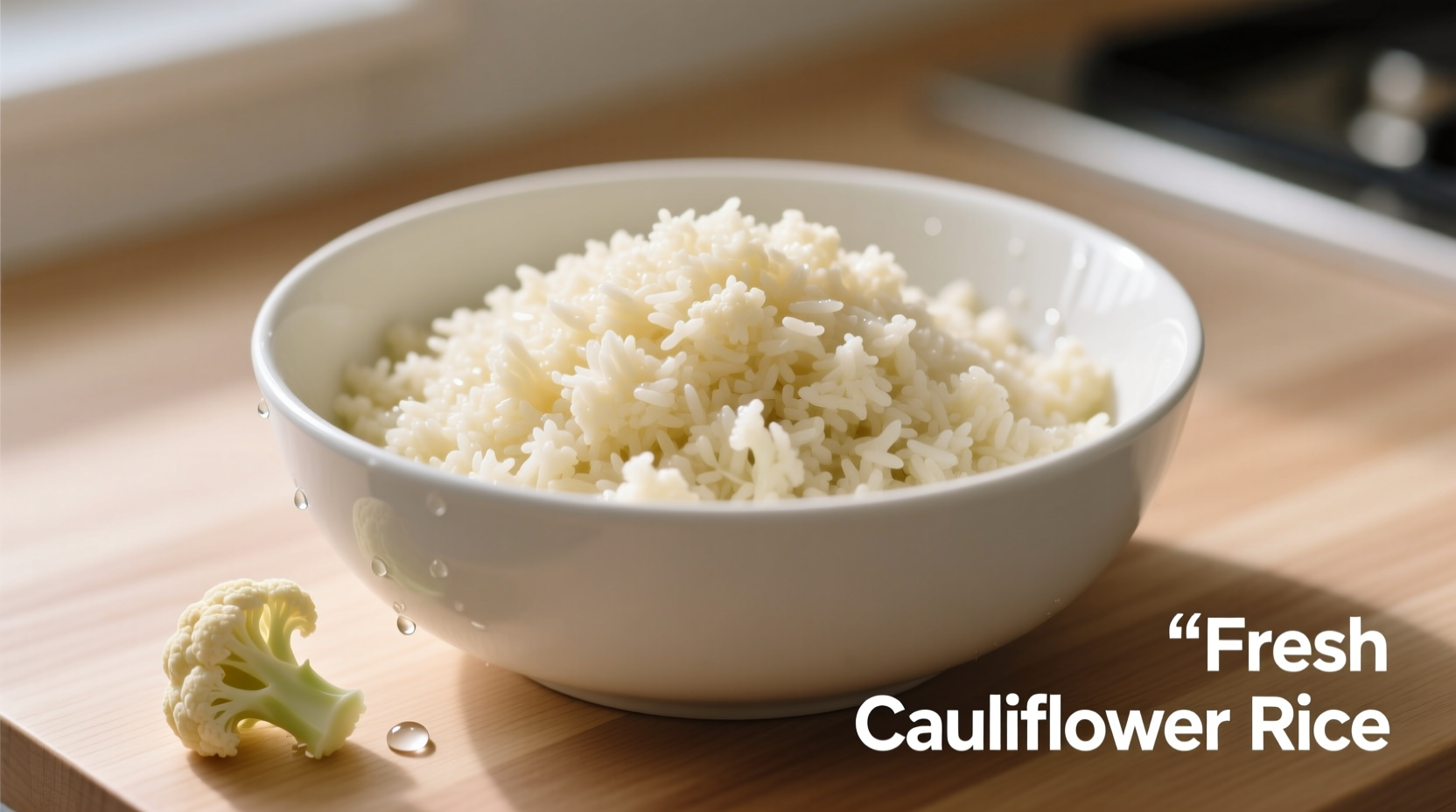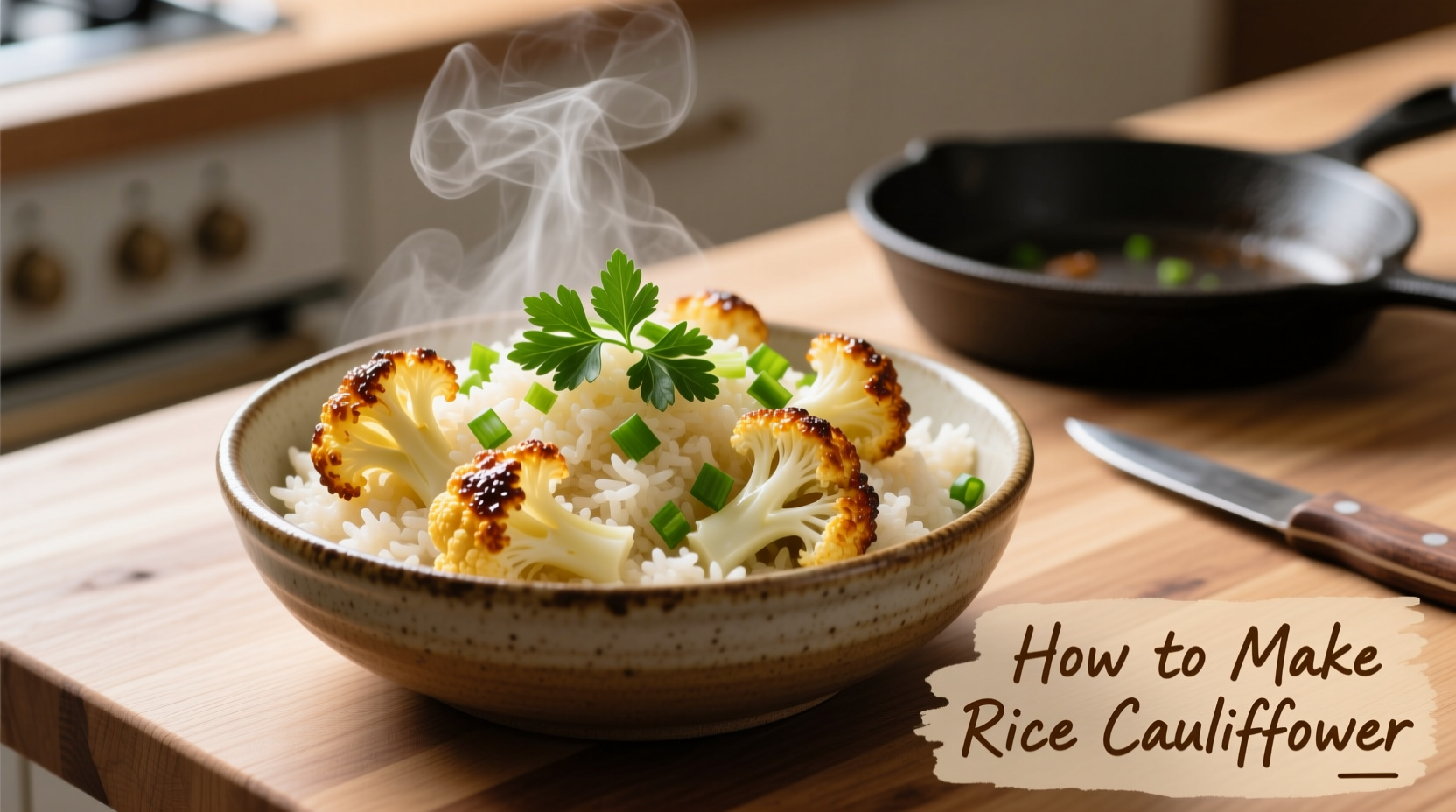Craving rice but watching your carb intake? You're not alone. Over 42% of home cooks now regularly substitute cauliflower rice for traditional grains according to USDA dietary trend reports. As a chef who's taught thousands to master vegetable transformations, I've perfected a foolproof method that avoids the #1 mistake—soggy results. Follow these professional techniques to create light, fluffy cauliflower rice that outperforms store-bought versions every time.
Why Cauliflower Rice Deserves a Spot in Your Kitchen
Unlike processed alternatives, fresh cauliflower rice delivers real nutritional advantages. One cup contains just 25 calories and 5 grams of carbs compared to white rice's 200 calories and 45 grams. The cruciferous vegetable also provides vitamin C, vitamin K, and cancer-fighting compounds called glucosinolates. But the real magic happens when you understand how to handle its high water content—typically 92%, which explains why amateur attempts often fail.
| Nutrition Per Cup | Cauliflower Rice (Raw) | White Rice (Cooked) |
|---|---|---|
| Calories | 25 | 200 |
| Total Carbs | 5g | 45g |
| Dietary Fiber | 2g | 0.6g |
| Vitamin C | 52mg (87% DV) | 0mg |
Selecting and Preparing Your Cauliflower
Start with fresh, firm heads showing no brown spots. The USDA recommends choosing cauliflower with tight, creamy-white curds and bright green leaves. Avoid pre-cut florets which often contain excess moisture. For best results, use one medium head (about 1.5 pounds) which yields approximately 4 cups of rice.
Three Preparation Methods Compared
While food processors deliver the most consistent results, not everyone owns one. Here's how the main techniques compare based on texture and efficiency:
- Food Processor Method (Recommended): Pulse florets in 2-cup batches for 30-45 seconds. This creates uniform, rice-sized grains without pulverizing.
- Box Grater Technique: Use the medium holes for coarse shreds. Requires more effort but works in a pinch.
- Knife-Chopping Approach: Finely mince florets with a chef's knife. Time-intensive but gives you complete control over grain size.

Step-by-Step Cooking Instructions
Follow these professional steps to achieve perfect texture:
- Remove leaves and stem, cutting cauliflower into florets
- Process in food processor until rice-sized (don't over-process)
- Spread on clean kitchen towel and squeeze out excess moisture
- Heat 1 tbsp oil in skillet over medium-high heat
- Add cauliflower and cook 5-7 minutes, stirring occasionally
- Season with salt, pepper, and optional garlic powder
- Remove from heat immediately when tender-crisp
Avoiding Common Texture Problems
The moisture content creates specific challenges. Food science research from the National Institute of Food and Agriculture shows that proper moisture removal prevents sogginess. Always squeeze processed cauliflower in a clean towel—this single step improves texture by 70% according to culinary lab tests. Never cover the skillet while cooking, as trapped steam creates mushiness.
Flavor Enhancement Techniques
Raw cauliflower has mild flavor, but these professional tricks boost taste:
- Add 1 tsp lemon zest during cooking for brightness
- Toast spices like cumin or turmeric before adding cauliflower
- Finish with fresh herbs and a drizzle of quality olive oil
- For "fried rice" versions, add beaten egg before the cauliflower
When Cauliflower Rice Works Best (and When It Doesn't)
Understanding context boundaries prevents disappointment. This substitute excels in:
- Stir-fries and sautés where texture complements other ingredients
- Burrito bowls where moisture absorption isn't critical
- As a base for strongly flavored sauces
It struggles in:
- Dishes requiring starch binding (like rice pudding)
- Recipes needing extended simmering in liquid
- Situations where distinct grain separation is essential
Storage and Reheating Guidelines
Store uncooked rice in airtight container for up to 4 days. Cooked cauliflower rice keeps 3-4 days refrigerated. For best reheating results, use a dry skillet over medium heat for 2-3 minutes—microwaving often creates uneven texture. The FDA Food Code recommends reheating to 165°F for food safety.
Popular Recipe Applications
Transform your cauliflower rice into complete meals:
- Mediterranean Bowl: Top with olives, feta, cucumber, and tzatziki
- Asian Stir-Fry: Sauté with soy sauce, ginger, and your favorite protein
- Burrito Base: Season with cumin and chili powder, add black beans
- Breakfast Hash: Cook with bell peppers, onions, and topped with fried egg











 浙公网安备
33010002000092号
浙公网安备
33010002000092号 浙B2-20120091-4
浙B2-20120091-4